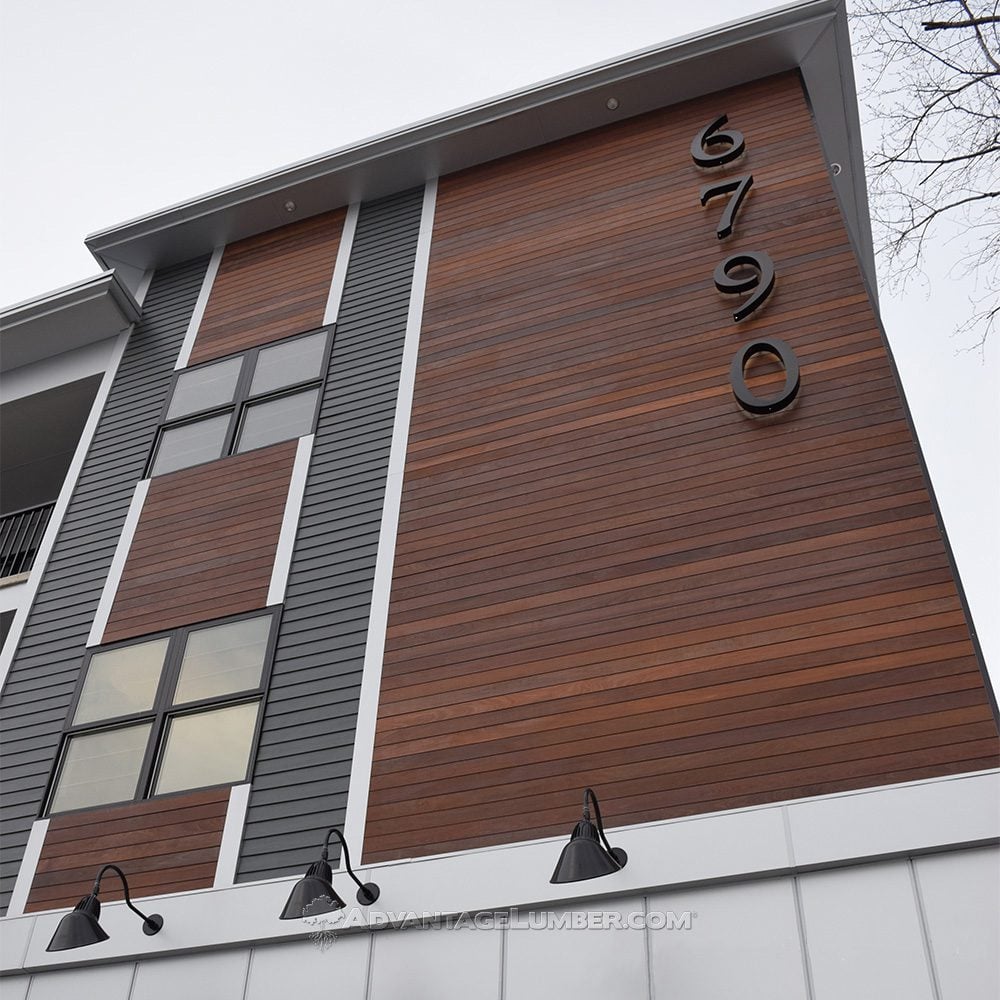When it comes to choosing siding for your home, the material you select plays a pivotal role in determining the aesthetic appeal, durability, and maintenance requirements of your exterior. Two popular options are fiber cement siding and wood siding.
In this blog post, we’ll dive deep into the differences between these materials, focusing on hardwood species like Ipe, Cumaru, and Tigerwood for the wood siding comparison.
Fiber Cement Siding

Pros:
- Durability: Fiber cement siding is known for its resistance to termites, rot, and fire. It can withstand harsh weather conditions, making it a long-lasting option.
- Low Maintenance: Unlike softwood, fiber cement doesn’t require frequent repainting or staining. Occasional washing is usually enough to maintain its appearance.
- Aesthetic Versatility: It can mimic the look of wood, stone, or brick, providing a range of design options.
- Cost-Effective: While the initial cost might be higher than some wood siding, its durability and low maintenance can make it more economical in the long run.
Cons:
- Installation Complexity: Fiber cement siding is heavy and requires special tools for installation, which can increase labor costs.
- Brittleness: It can crack if mishandled during installation or if struck by a heavy object.
- Color Selection: You are limited to paint colors and can not get the warm realistic wood grain look.
- Weather Damage: If you live in an area prone to hail storms, large hail pieces can crack and or put holes in fiber cement siding.
- Projectile Damage: Fiber cement siding is easily damaged from projectiles shooting from your lawn mower, your neighbors lawn mower, kids throwing balls, etc…
Wood Siding

Wood siding offers a natural and timeless beauty that many homeowners find appealing. We’ll focus on three hardwood species: Ipe, Cumaru, and Tigerwood.
Ipe (Brazilian Walnut)
Pros:
- Durability: Ipe is incredibly dense and resistant to rot, insects, and even fire, similar to concrete.
- Aesthetic Appeal: It has a rich brown color with fine grain, adding a luxurious look to exteriors.
- Longevity: Properly maintained, Ipe siding can last up to 75 years.
Cons:
- Cost: Ipe is one of the more expensive wood siding options.
- Maintenance: To maintain its color, Ipe requires regular oiling; otherwise, it will turn to a silvery-gray patina.
- Hardness: Its density makes it difficult to work with, all holes need to be pre-drilled
Cumaru (Brazilian Teak)
Pros:
- Durability: Cumaru is highly resistant to rot, decay, and insect attack, making it suitable for siding.
- Color Variation: It offers a range of colors from yellow-brown to reddish-brown, providing a unique aesthetic.
- Cost-Effective: It’s generally less expensive than Ipe while still offering good durability.
Cons:
- Maintenance: Like Ipe, Cumaru requires regular maintenance to retain its color.
- Workability: Its hardness can make installation and machining challenging.
Tigerwood
Pros:
- Distinctive Appearance: Tigerwood is known for its striking grain patterns and vibrant color variations.
- Durability: It’s resistant to rot and insects, making it a durable option for siding.
- Cost: It’s generally more affordable than Ipe and Cumaru.
Cons:
- Maintenance: Regular oiling is needed to maintain its appearance.
- Color Fading: Tigerwood’s color can fade to a silver-gray if not maintained properly.
Conclusion
When choosing between fiber cement siding and wood siding, consider factors like durability, maintenance, aesthetic preferences, and budget. Fiber cement offers a low-maintenance and durable solution with a variety of design options, while wood siding provides natural beauty and warmth, with each hardwood species offering its own unique characteristics. Ultimately, the best choice depends on your specific needs and preferences.


